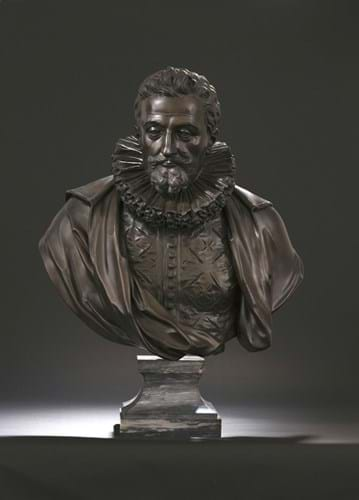
The bidding opened at €500,000 and five interested parties carried the price upward, two on the phone and three in the room. The winning bid, which equated to €3.05m with fees, was placed by a collector.
The bust portrays Paul Phélypeaux de Pontchartrain (1569-1621), a French minister during the reign of Henri IV who went on to accompany the new king, Louis XIII, to the siege of Montauban. It is attributed to Francesco Bordoni.
Bordoni, a Florentine sculptor who moved to Paris, became premier Sculpteur du Roi to the French king.
It stands 2ft 10in (88cm) high on a blue marble socle and had been in the same family, direct descendants of the sitter, for 400 years. It was discovered by Géraldine d’Ouince of De Baecque & Associés auction house which offered it for sale at Drouot on November 20.
The auction house said it was the first time a 17th century bronze portrait of such high quality had been auctioned.
The price was well above the €500,000-800,000 estimate.
Stately Subject
Appointed secrétaire des commandements to Marie de Medici in 1600, Phélypeaux went on to become secrétaire d’état to Henry IV shortly before the king was assassinated. He subsequently spent time during Marie de Medici’s Regency attempting to maintain peace between the Catholics and Huguenots in a particularly troubled period of religious conflict.
The bust was originally placed in the family chapel in Saint Germain de l’Auxerrois in Paris, as shown in a drawing by Robert de Cotte. However, Paul Phélypeaux’s grandson, Louis II Phélypeaux, removed the bust to install it at the Château de Pontchartrain as part of a larger sculpture collection.
Alongside scientific analysis of the bronze, the attribution to Bordoni was made on the basis of its quality (it is executed with a high degree of naturalism and detail) and its comparison to Bordoni’s bronze bust of Louis XIII in the Louvre. Moreover, Bordoni was in Paris at this period and also frequented the church of Saint Germain l’Auxerrois.






